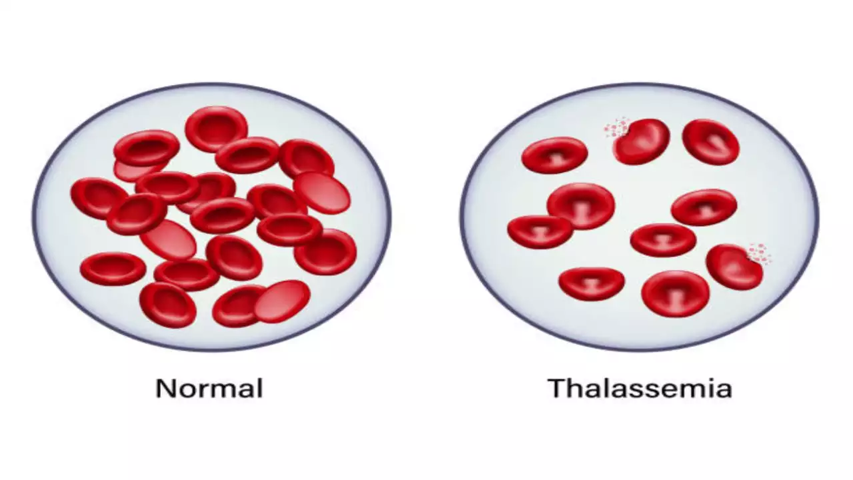Description

Source: TimesofIndia
Disclaimer: Copyright infringement not intended.
Context
Date: May 8, 2024
Theme: "Empowering Lives, Embracing Progress: Equitable and Accessible Thalassaemia Treatment for All."
Details
History
- World Thalassemia Day was first celebrated on May 8, 1994, by the Thalassaemia International Federation (TIF).
- TIF, a non-profit organization founded in 1986, initiated this day in memory of TIF President Panos Englezos' son, George, who battled thalassemia.
- Over the years, TIF has been instrumental in advocating for equitable thalassemia treatment and early diagnosis worldwide.
Significance
- Thalassemia is a genetic blood disorder characterized by insufficient production of hemoglobin, leading to symptoms like fatigue, slow growth, and anemia.
- Annually, around 3,00,000 babies are born with severe forms of thalassemia worldwide.
- Early detection through prenatal blood tests of both parents can help reduce the number of thalassemia births and make treatment more effective.
About
- Thalassemia is a group of inherited blood disorders characterized by abnormal hemoglobin production, leading to reduced red blood cell (RBC) production and anemia.
- Thalassemia is prevalent in regions with a high prevalence of carriers, including the Mediterranean, Middle East, Africa, South Asia, and Southeast Asia.
- Thalassemia is inherited in an autosomal recessive manner, with mutations in the globin genes (HBA1 and HBA2 for alpha thalassemia, HBB for beta thalassemia) causing reduced or absent synthesis of alpha or beta globin chains, respectively.
Types of Thalassemia:
- Alpha Thalassemia:
- Alpha thalassemia results from mutations affecting the alpha globin genes on chromosome 16.
- Severity ranges from asymptomatic carriers (thalassemia trait) to severe forms such as Hb Bart syndrome and Hb H disease.
- Beta Thalassemia:
- Beta thalassemia results from mutations affecting the beta globin gene on chromosome 11.
- Severity varies from asymptomatic carriers (thalassemia trait) to severe forms such as beta thalassemia major (Cooley's anemia) and beta thalassemia intermedia.

Symptoms:
- Chronic hemolytic anemia is the hallmark feature of thalassemia, resulting in fatigue, weakness, pallor, and shortness of breath.
- Severe forms of thalassemia can lead to complications such as growth retardation, skeletal deformities, splenomegaly, hepatomegaly, gallstones, and iron overload.
- Patients with beta thalassemia major often require lifelong transfusion therapy to maintain adequate hemoglobin levels.
Diagnosis:
- Diagnosis of thalassemia involves hematological tests such as complete blood count (CBC), hemoglobin electrophoresis, and measurement of hemoglobin A2 and fetal hemoglobin levels.
- Molecular genetic testing can identify specific mutations in the globin genes, providing valuable information for genetic counseling and prenatal diagnosis.
Management:
- Transfusion Therapy: Regular transfusion therapy with packed red blood cells is the mainstay of treatment for patients with severe forms of thalassemia to alleviate anemia and improve quality of life.
- Iron Chelation Therapy: Long-term transfusion therapy can lead to iron overload, necessitating iron chelation therapy with medications such as deferoxamine, deferiprone, or deferasirox to prevent organ damage.
- Bone Marrow Transplantation: Hematopoietic stem cell transplantation (bone marrow transplant) offers a potential cure for thalassemia in eligible patients, particularly in young children with compatible donors.
- Genetic Counseling: Genetic counseling and carrier screening programs help identify individuals at risk of having children with thalassemia and provide information about reproductive options, including prenatal diagnosis and preimplantation genetic diagnosis.
- Prenatal Diagnosis: Prenatal diagnosis through chorionic villus sampling (CVS) or amniocentesis allows early detection of thalassemia in the fetus, enabling informed decision-making regarding pregnancy management.
Sources:
News18
|
PRACTICE QUESTION
Q. Multidisciplinary approaches encompassing genetic counseling, transfusion therapy, iron chelation, and bone marrow transplantation are essential for managing thalassemia and improving patient outcomes. Discuss. (150 words)
|
















